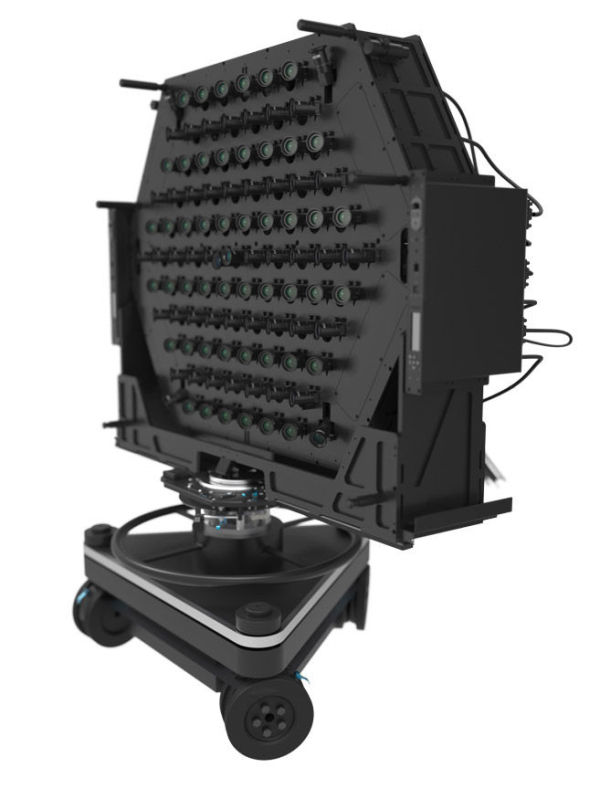About two years ago, Lytro announced that the Immerge camera would enable future volumetric VR productions in cinematic quality and with Six Degrees of Freedom (6DoF) -- since then, to our knowledge, only two demo films have been produced and camera development continues. The form factor has changed considerably, instead of being a sphere, it is now conceived as a large-area camera array mounted on a little cart, all in all almost as tall as a man. A 360° recording is therefore not possible any more, but the setup has to be rotated. With the current version Immerge 2.0, which was recently presented to an American VR blog, the array covers an angle of view of 120° thanks to alternating camera rows looking in different directions (see illustration), so three consecutive shots have to be taken in order to obtain a full spherical image.

Improvements seem have been made to the software, so that a higher-quality image is calculated from the light field data than before. Per eye can be exported to 5K, in theory even 10K would be possible, but there is no VR headset in sight to be able to display such a resolution; even 4K per eye is currently hardly a HMD.
The Immerge still does not appear to be directly ready for the market, and there are even fewer technical details at the manufacturer than at the start. A further demo video will be released in the first quarter of 2018. Unfortunately, there is also nothing to be read at Lytro about the IBC  teasered, smaller lightfield video camera in Amsterdam.
teasered, smaller lightfield video camera in Amsterdam.

